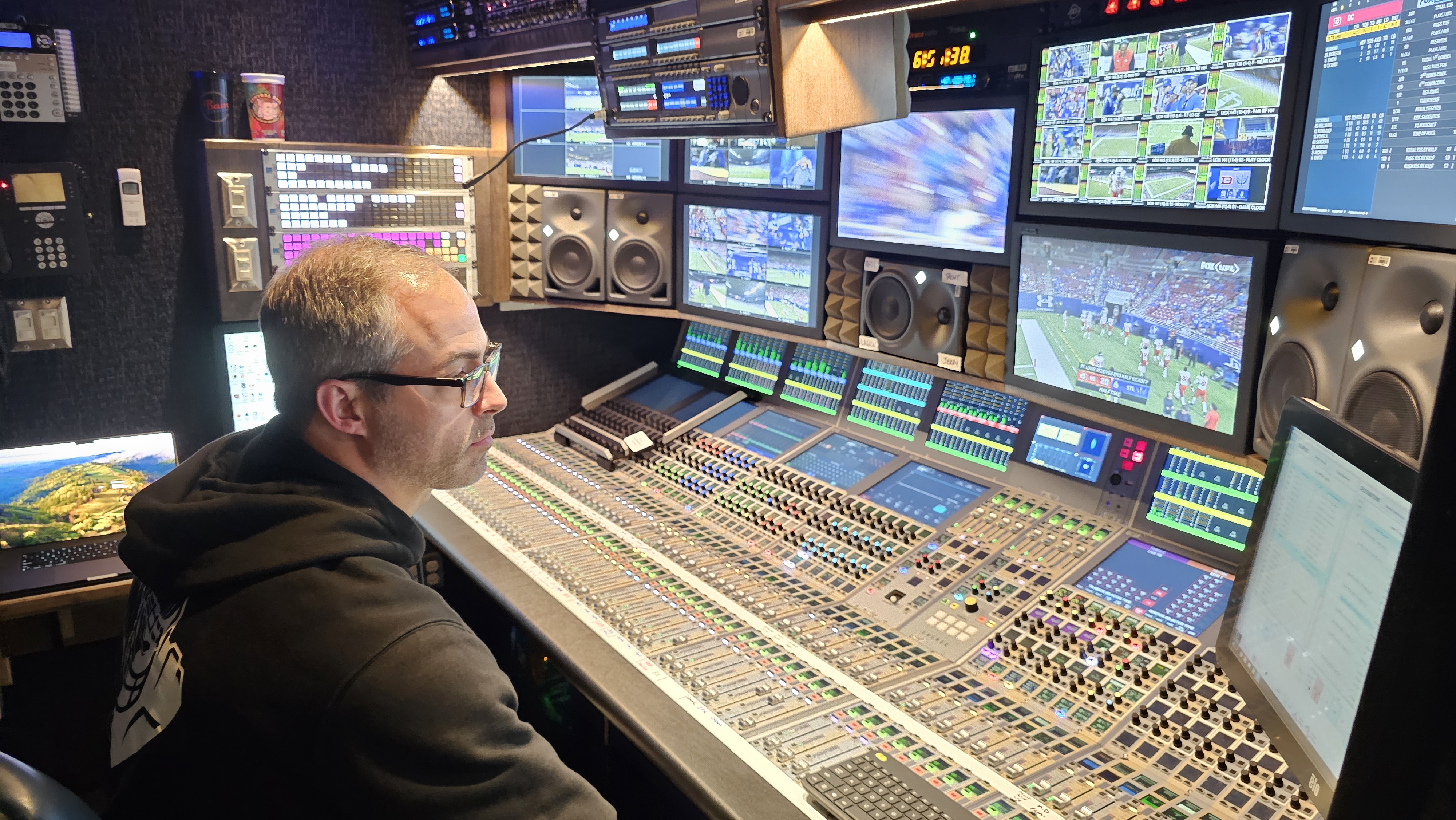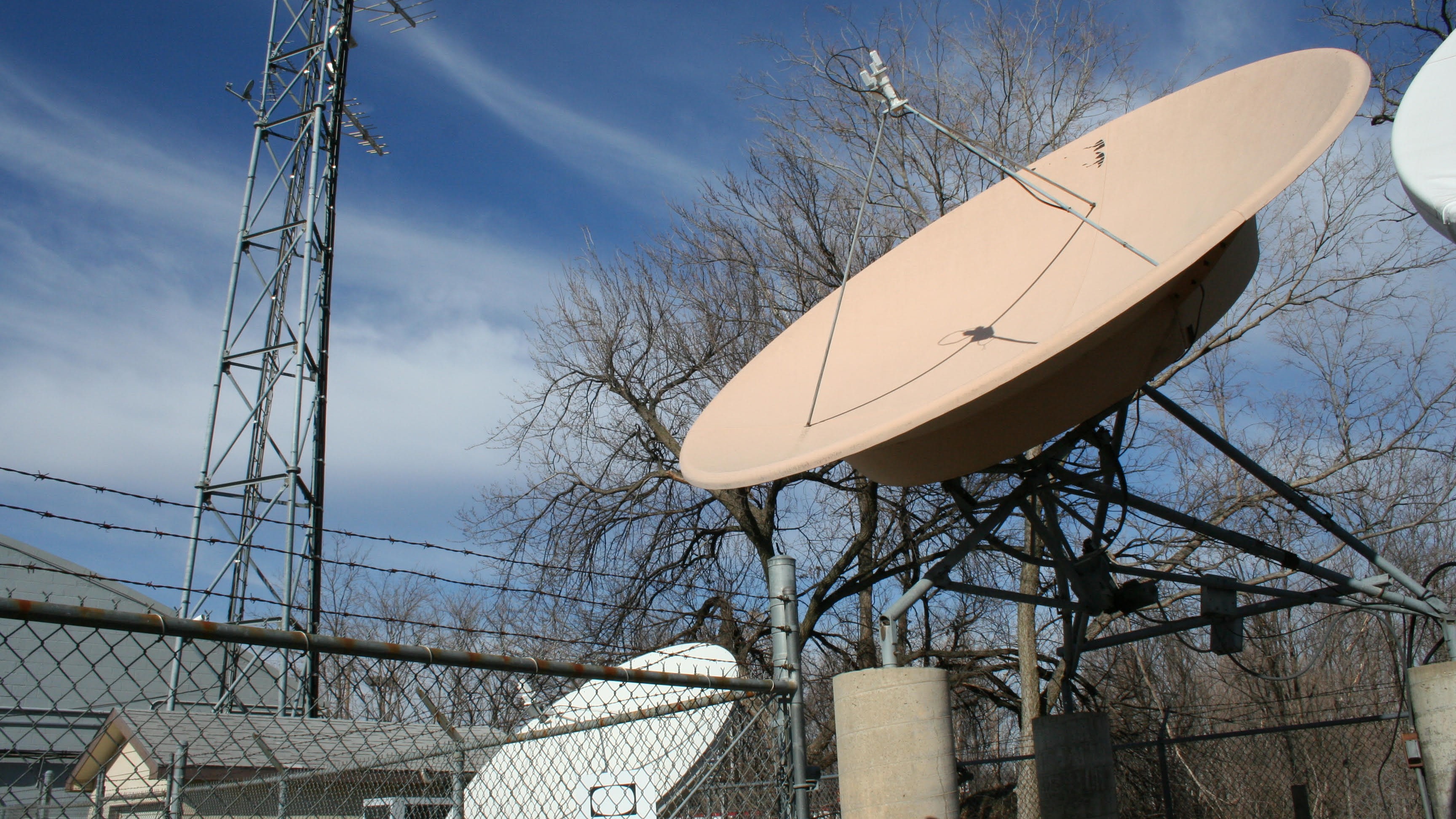UFL Conference Championship Sees Fox Sports Continue AI, 5G Innovation
AI is helping to enhance audio production, and 5G is changing the contribution equation

ST. LOUIS—Many tests define the outcome of football games. There are tests of will, individual talent, team play, gameplans, motivation and more.
But for Fox Sports, the UFL has become a proving ground where innovative new technology can be tried under game conditions to determine what works, what needs improvement and what new production tech tools the broadcaster can use in the future to up its game regardless of the sport that’s being covered.
Such was the case June 8 here at The Dome at America’s Center when the UFL’s D.C. Defenders defeated the St. Louis Battlehawks 36-18 in the XFL Conference Championship. (Editor’s note: XFL is now the name of the UFL conference to which both teams belong.)
During the game, Fox Sports continued limited deployments and separate technology trials–one for video and the other for audio—that it sees one day playing important roles in UFL productions and beyond.
AI and Audio
The evolution of TV sound has seen mono give way to stereo, which in turn has given way to 5.1 surround and is now advancing slowly to immersive, object-based audio. But there’s another ongoing audio advancement that Fox Sports is testing.
The broadcaster is testing the use of artificial intelligence to give its audio engineers additional tools to enhance the soundscape viewers' experience during UFL games, NFL matchups and ultimately the range of sports it produces.
“One of the things we’re trying to determine is how do we derive more sound out of the sound we are capturing that is going to interest viewers,” said Brad Cheney, vice president of Field Operations and Engineering at Fox Sports.
The professional video industry's #1 source for news, trends and product and tech information. Sign up below.
About 100 feet away from the Game Creek Video Gridiron production unit where Eddie Verstraite, the broadcaster’s UFL audio sub-mixer, sat behind his console, the broadcaster positioned a six-foot-long folding table with its AI setup receiving the sub-mix from the truck—among them the field microphones.
“There are eight microphones out on the field level. The AI allows us to pan and scan around to find certain pieces of audio triangulated between those microphones,” said Cheney. “The beauty of it is that once you have that audio coming inbound, you're not tied to a single output of it. You can make multiple outputs of it and start to do other things with player tracking; for example, you are able to follow that audio or that person around.”
During the game, one goal was to determine the “next pieces of the puzzle” to make the triangulation possible, which entailed isolating sounds correctly to highlight a player or coach and thereby improve the overall production, he said.
“We want to enhance the show by only putting out an array of microphones vs. lots of people trying to aim directionally,” said Cheney.
The broadcaster has other AI-based audio enhancements in the works, as well. With players, coaches and referees mic-ed during games, it’s easy to miss exchanges that might offer key insights into what’s happening on the field. Fox Sports is looking to use speech-to-text AI algorithms to help.
“The more audio we’re taking in and the more we are able to capture, the harder it is to figure out what we’re listening to,” he said.
The broadcaster is testing AI speech-to-text identification of keywords in conversations and “is beginning to figure out the level of keywords that pop out” to alert the production team about what is being said, the next play to be run and what modifications are being made, said Cheney.
Ultimately, the broadcaster envisions this level of insight not only alerting production personnel to what’s happening, but also how announcers call games and even how coaches coach as opposing teams receive this data in real time, he said.
AI also holds out the prospect of bringing a more consistent sound to the production of UFL, NFL and college football games, Cheney added. “The benefit of having this stuff and capturing and keeping it is that we’re able to model it for a UFL scenario, and then we’re able to model it against the NFL scenario by taking certain mics and certain audio out of what we’re doing because each has different micing capabilities and different audio coming inbound.”
Private 5G Network
This season, Fox Sports has outfitted at least one of its sideline cameras with wireless connectivity to a private 5G network for contribution. During the conference championship game, it worked with Verizon and CP Communications to deploy a private 5G network and wireless sideline camera and relied on public 5G connectivity outside to contribute shots from a helicopter above the venue.
“We launched in the latter half of the UFL season a true private 5G network with a live sideline camera that went all the way back to Los Angeles directly on a private connection,” said Cheney. The camera, which was linked into Fox Sports’ production network on-site, was linked to Los Angeles where the Homerun Production (REMI) was being done.
“That camera bypassed every encode path we had here, beat all of the encoders back to L.A. with full, true video, return [video], video control, tally, comms—all of that stuff—all built into a single system,” said Cheney, adding that the delay was about 500ms. “It was fully operational, ran in the game and did everything we wanted it to do.”
Cheney anticipates the use of 5G wireless camera contribution and networks will only grow over time. Not only is there less latency, but 5G private and public networks eliminate the complexity of shoehorning signals into crowded spectrum, the need for special temporary authority (STAs) from the FCC and setting up RF receive sites for shots, such as those from the helicopter.
The setup also offers greater flexibility depending upon where it is being used. For instance, the day before the game, Fox Sports deployed four roaming wireless IP cameras for the 2025 Belmont Stakes in Saratoga Springs, N.Y. Two were outfitted with 5G modems from multiple carriers that could be used in a bonded channel configuration if needed on public wireless networks, and two others ran exclusively on the private 5G network setup for the race.
“We're starting to up that ante of what's going on when it comes to being able to have private networks merging with public networks,” said Cheney. “We're really taking a giant leap forward with our partners in doing private wireless 5G that will actually start to take over our regular COFDM RF.”
Phil Kurz is a contributing editor to TV Tech. He has written about TV and video technology for more than 30 years and served as editor of three leading industry magazines. He earned a Bachelor of Journalism and a Master’s Degree in Journalism from the University of Missouri-Columbia School of Journalism.




